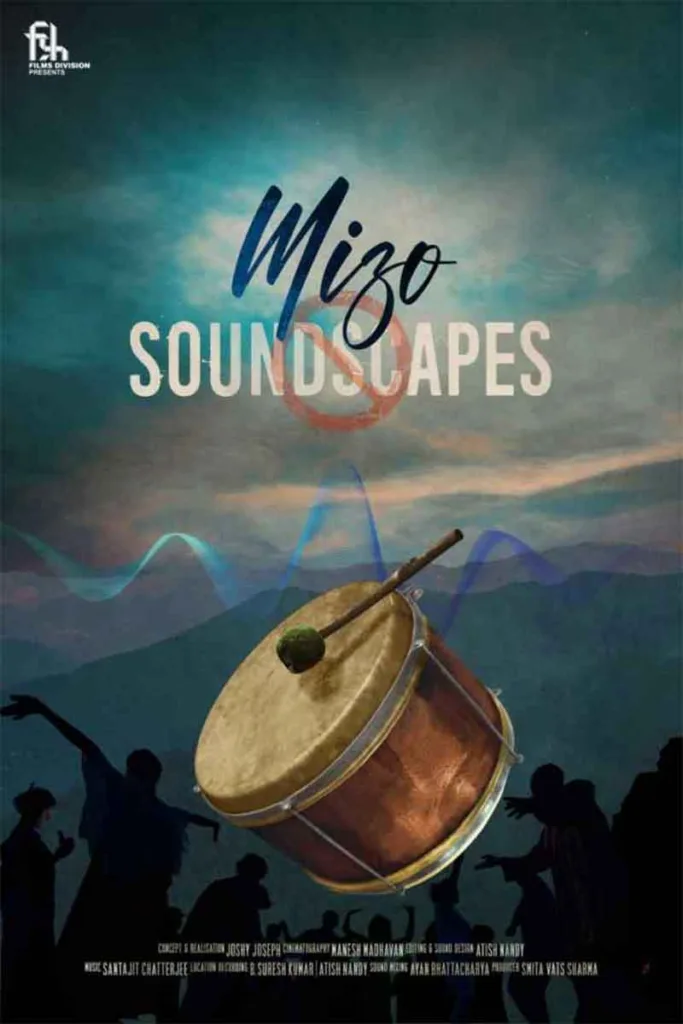
Seaspiracy is a powerful new documentary about the hazardous, unruly world of industrial fishing and stomach-churning abuse, overuse, disregard for life, as shown on Netflix, released by Disrupt Studios March 24th 2021.
The opening scene of the film sets the tone with a long-shot of an isolated fishing trawler at sea as the voice-over of a former fishing vessel crew member, who escaped forced slavery after 10 years non-stop at sea, exclaimed: “When ships are in the middle of the ocean. When problems occur. They can throw you overboard into the sea. It is dangerous for you to make this documentary. There are many risks.” A second escapee intones: “If you’re scared of dying, go home.”
The War Zone
War flattens terrain and kills. Based upon Seaspiracy’s story, industrial commercial fishing fits this description to a tee.
Above all else, the film depicts a war zone, bloody and creepy with myriad red-ish/orange-ish streaked rusty hulls of cadaverous trawlers prowling, dropping gigantic nets, denuding entire seafloors, nothing escapes this creepy crawl in a dark otherworldliness of villainous shadowy Mafioso-type slave-infested fishing vessels that drop 10-mile nets or long-line fishing with enough hook-lines to wrap 500 times around the planet, on a daily basis. Nothing survives this war zone.
According to Seaspiracy, fisheries crime is the same as transnational organized crime. The syndicates that operate behind the scenes of illegal fishing are the same as those behind drug trafficking and human trafficking.
Fishery workers at sea are involved in the most dangerous jobs on Earth, 24,000 deaths per year. Slavery is commonplace, as for example, according to Seaspiracy; there are 51,000 fishing boats in Thailand waters under the Thai flag. Those boats are uneconomic without free cheap labor. Seaspiracy traveled to Bangkok to interview escaped fishing boat slaves: Some spent 10 years non-stop at sea. Nobody could get off the vessel with its hired guards, similar to the infamous overseers of the Deep South. One interviewee claimed the ship’s captain used an iron bar as a weapon to control workers. Dead bodies were simply dropped overboard.
This film captures horrific scenes of massive splashing bloody deaths behind industrialized commercial fishing, which is depicted as the preeminent issue of whether fish stock survive on planet Earth, 2.7 trillion caught per year, five million killed every minute. Global fish populations have plummeted, e.g., halibut -99%, cod -86% Bluefin tuna -97% haddock -99%. These are extinction-type numbers, as industrial fishing knows no limits. If current trends stay on track, by 2048, the oceans will be empty! Thereafter, the seas will emit strange sour odors as pitch-blackness gradually discolors, displaces its rich vibrancy of life.
The oceans are home to 80% of all life on Earth, rapidly dwindling by the day as 4,600,000 commercial fishing vessels work away, many ethical, honest hard-working, but far-far-far too many violating international rules & regs, crime on the high seas, murdering difficile workers, as well as death of law enforcement officers, but mostly, in the big picture, slaughter of marine life by the tons, literally wiping out some species as Seaspiracy searched for impossible answers to a most difficult question: “What is sustainable fishing”?
At its heart, Seaspiracy depicts the fishing war zone as epitomized by the callous slaughter of sharks. Sharks kill 10 people per year. The fishing industry kills 11,000-to-30, 000 sharks per hour. Yes, per hour. Alarmingly, one-half of the kill is “by-catch” thrown overboard as waste by commercial fishing fleets, 50,000,000 sharks caught annually in nets, side by side with your favorite seafood, tossed overboard as waste or “by-catch.”
Not only that, but shark slaughter Phase 2 is “shark-finning, a Mafioso directed enterprise of shark fins shipped to Asia, predominately China, for shark-fin soup, a status symbol that has no nutritional value and no special flavor, but can cost up to $100/bowl. HK is known as Shark Fin City, where Seaspiracy’s video cameras were decidedly pushed back by more than idle threats.
Sharks are known as “apex predators” at the very top of the food chain. Loss of sharks topples the entire marine food chain from the top down. Sharks keep the ocean healthy and maintain healthy fish stocks. Without sharks the oceans turn into swamps. They are as important as dolphins and whales for survival of the oceans.
According to Seaspiracy calculations, shark species are crashing, thresher shark -80%, bull shark -86%, hammerhead shark -86%, overall, the total shark population is down by 80-99%. These are disturbing extinction-type numbers, comparable to the planet’s worst extinction event, the Permian-Triassic of 250 million years ago that wiped-out 95% of marine life. The planet is thus fast approaching an endpoint of ‘extinction of the seas.’ Obviously, a bigger question is how long does humanity hang in there?
Inordinate shark deaths bring in their wake death of almost all other ocean species. For example, the abundance of seabirds has declined 70%. Why? Marine predators such as sharks drive fish near the surface for feeding purposes where seabirds dive and grab dinner. No predators, no near surface fish for seabirds to catch.
As exposed in the film, several issues threaten total decimation or unmitigated deadening of the oceans. As a matter of fact, people comfortably seated at home see TV news items of whales washing up on beaches or turtles or birds strangled in netting or stomachs filled with plastic. Fishing nets are the single biggest cause of unintentional marine death because of industrialized fishing, as trawlers lose miles of netting. Forty-six percent (46%) of the notorious Great Garbage Patch in the Pacific Ocean consists of lost commercial fishing nets.
As explained in Seaspiracy, whales and dolphins drown when caught in fishnets. Yet, they are integral to the survival of the ocean. When they surface to breathe, their excretion fertilizes tiny marine plants called phytoplankton which, on an annualized basis, absorbs 4x the amount of carbon dioxide as rainforests, keeping the oceans alive and serving as one of the planet’s major sources of oxygen. Alas, according to Seaspiracy, “Our oceans have turned into a toxic plastic soup.”
Along the way, Seaspiracy discovered double-trouble for whales, as Japan resumed commercial whale hunting, heading out to Antarctica despite the worldwide ban since 1986. Not only Japan, several countries have been killing whales under the radar. The International Whaling Commission banned commercial whaling in 1986 because of “extreme depletion of most of the whale stocks.” Nevertheless, Japan and Iceland hunt under the guise of “scientific whaling.”
Seaspiracy discovered Japan’s national fixation on whales and dolphins extends to mass slaughter in the south of the country at Taiji, where dolphins and small whales are rounded up for an annual kill-off. Japan’s government attempts to cover up this slaughter or war on dolphins. Upon arrival at Taiji, Seaspiracy encountered pushback by police monitoring strangers with cameras.
Taiji’s annual dolphin slaughter: Fishermen bang poles against the hulls of their boats to herd the dolphins into a cove where they are slaughtered, every day during the duration of this bloody celebration. It’s done under the guise of “pest control.” Dolphins, which are very smart mammals, are considered “competition” for the fishing industry. For years now, Japan has pointed the finger at the dolphins as “the culprits behind over-fishing.” Yes, believe it or not, it is true.
Seaspiracy hooked up with one of the few NGOs in the world that attempts to police the international illegal fishing trade named Sea Shepard, a nonprofit marine conservation group that works with governments to track down and arrest illegal fishing vessels, for example, in Liberia. According to Stefano Tricanico of Sea Shepard: “We have mostly international fleets coming from countries where they’ve already depleted their own local stocks, and they’re pushing further and further away to try and make up for that. And using more and more sophisticated technology to increase catch numbers. They are illegal, and they catch huge amounts.”
The Seaspiracy crew witnessed Sea Shepard and the Liberian Coast Guard track down illegal vessels, which are virtual floating slaughterhouses, blood everywhere in the water. In Liberian waters, they boarded a Chinese trawler with enormous quantities of illegally caught fish stored away in its hold. The vessel was detained and fined.
Sea Shepherd travels the world policing violators of international rules. By and large, over 100 fishing regulations are not enforced. Shocking discoveries ensued as Seaspiracy discovered, for example, 10,000 dolphins are killed every year as “by-catch” just offshore France. Come to find out, the greatest threat to whales and dolphins is commercial fishing. Over 300,000 whales and dolphins are killed annually as “by-catch” and tossed aside into the sea.
Even though many fisheries claim “dolphin-free tuna,” the authorities caught 2 tuna boats that caught killed 45 dolphins, tossed away, per 8 tunas kept and then claimed “dolphin-free tuna.” The vessel was working for “Dolphin Safe canned tuna.” In turn, The Earth Island Institute is behind the Dolphin-safe labels. When Seaspiracy met with and interviewed Earth Island personnel, to their dismay, nobody really goes to sea to witness whether dolphin-safe is a reality. Earth Island admitted this and admitted that when they do send observers, they can be “bribed” into agreeing to label the catch as “dolphin-free.”
Earth Island, a non-for-profit observer of sea catch on behalf of the general public is paid to license their dolphin-safe label by the fishing industry. Along the way, they generally take the vessel captain’s word for it that the catch is dolphin-free, meaning “no dolphins killed during the catch.” This is a bold-faced lie, hoodwinking consumers around the world.
Based upon interviews of people in the know, the internationally recognized dolphin-free label is a fabrication, no guarantees according to a spokesperson at Earth Island.
Meanwhile, Pacific Bluefin tuna, with less than 3% remaining in the wild as a result of overfishing puts the $42 billion tuna industry at risk of imminent collapse, as a result of its own overfishing, fishing-out the most glorious fish of the sea, the queen of the sea, a powerful swimmer that crosses the Pacific Ocean in 55 days. Because of the plunging decline of the species, The Monterey Bay Aquarium (Ca) recommends that consumers say “no thanks” to restaurants that dare serve Pacific Bluefin tuna.
According to an investigation by Seaspiracy, the Marine Stewardship Council (“MSC”), a nonprofit whose label is found on cans of fish on grocery store shelves, certifies fisheries that unfortunately produce astonishing levels of “by-catch.” MSC refused an interview to discuss “sustainable fishing.” Unilever (owner of a seafood retailer) is a founder of MSC, which is the world’s largest promoter of “sustainable fishing.” In fact, 80% of MSC yearly income is from licensing its imprimatur on seafood as “sustainable catch.” But, as Seaspiracy questioned, how can commercial fishing that includes 40% “by-catch” carry sustainable labeling?
Is there such a thing as sustainable fishing?
Seaspiracy talked to Captain Paul Watson, former National Director of the Sierra Club who quit because “they didn’t want to come out against fishing and hunting because they thought they would lose membership support.” According to Watson, “Well, first of all, there’s no such thing. It’s impossible. There’s no such thing as a sustainable fishery. There’s simply not enough fish to justify that. It’s not sustainable, it’s just a marketing phrase, that’s all.”
Oceana is the world’s largest marine conservation group. Oceana advocates sustainable fishing. But they could not define “sustainable” when questioned by Seaspiracy about the meaning behind the phrase. Yet, they’re one of the world’s biggest advocates: “Eat sustainable fish.”
Beyond the issue of whether “sustainable fishing” is even a reality, another very serious issue is the impact of commercial bottom trawling, as vessels cast 10-mile nets scooping up everything in sight. This form of extracting fish, also deforests the oceans. Seaspiracy interviewed Richard Oppenlander who informed them “bottom trawling by big fishing boats wipes out 3.9 billion acres of underwater life forms every year. Equivalent to wiping out the land area of Greenland, Norway, Sweden, Finland, Denmark, the UK, Germany, France, Spain, Portugal, Italy, Turkey, Iran, Thailand and Australia combined, every year.” Marine plants per acre store 20 times more carbon than forests on land. Most of the planet’s CO2 is stored with help of marine vegetation, algae, and coral.
Fishing vessels are death machines that mop up the basis of the whole marine food chain. Which also removes a source of nutrients for coral reefs, which feed off fish excrement. As it happens, commercial fishing has become a major threat for coral reefs around the world. For example, 90% of the large fish which prospered in the Caribbean coral reefs through0ut the past 1,000 years are now gone.
Seaspiracy, in search of a sense of relief, made the decision to look at fish farming with its eco satisfying reputation. After all, 50% of the world’s seafood now comes from fish farms. Scotland is one of world’s leading producers of farm salmon. Seaspiracy discovered issues. Fish farming requires enormous quantities of fish oil and fishmeal that comes from wild fish. So, in essence, fish farming lives off the catch of wild fish. Seaspiracy met with Dan Staniford, a whistleblower that exposed the problem of severe sea lice infestations in the farms. The crew filmed salmon being eaten alive by sea lice parasites, which, according to Staniford, is common in fish farms worldwide. Additionally, and kind of icky to consider, each fish farm in Scotland produces organic waste equal to a town of 10-20,000 people. Thus, salmon restrained in confined fish farms swim in their own feces.
According to Dan Staniford, 50% of salmon in fish farms die from anemia, lice infestation, chlamydia, heart disease, “Salmon farming is a waste of resources.” As explained by Staniford, farm salmon without colorants added to the feed would be completely gray. The pinkish coloration is artificial.
After discovering so many serious issues with the commercial industry, Seaspiracy decided to checkout marine protected areas. An expert on the subject informed them that yes, there are ocean-protected areas. Presently, 5% of the oceans are marine protected areas, but that is misleading. Over 90% of those protected areas still allow fishing on a sustainable basis. In reality, less than 1% of the oceans are being regulated via marine protected areas.
Seaspiracy interviewed Dr. Sylvia Earl, founder of Mission Blue and founder of Deep Ocean Exploration and Research. According to Dr. Earl, based upon current commercial fishing activities, “by the middle of this century, commercial fishing will cease to exist because, there won’t be enough fish to catch.”
In support of Dr. Earl’s statement, in the middle of the North Sea in the mid 19th century, a typical fishing boat (one vessel) would catch one to two tons of halibut per day. Today, the entire fishing fleet at the same location catches two tons of halibut per year.
Robert Hunziker is a writer from Los Angeles
GET COUNTERCURRENTS DAILY NEWSLETTER STRAIGHT TO YOUR INBOX
















































